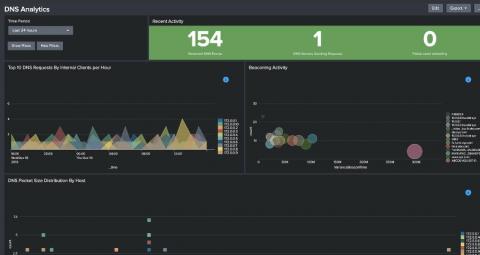Security | Threat Detection | Cyberattacks | DevSecOps | Compliance
%term
Navigating ICS Security: Having your Action Plan Ready
Trust, respect, understanding. These are all two-way relationships that must be earned over time. Whilst someone being hired in a senior position will likely already have a certain level of each, part of your job is to continuously cultivate all three of these elements with colleagues no matter your grade. When working within a cybersecurity practice, it is critically important to have this level of understanding across large swaths of the workforce, from the senior level to operations teams.
The Outcomes of SIEM and SOAR in 2019 (Part 2)
Integration is one of the most critical features that every security product should have. But, unfortunately, this is not a case when it comes to too many traditional security tools. The organizations that were using SIEM with having integration capability remained secure to a large extent. For example, an effective SIEM can inject Threat Intelligence Feeds (TIF) from multiple different sources.
Brexit and the GDPR - what the EU Withdrawal Agreement means for data protection in the UK
Following a long period of political turmoil, the UK government’s Brexit withdrawal bill has completed its passage through the House of Commons and received royal assent. While this deal is merely the starting point of the Brexit process, it sets into motion an intensive period of trade negotiations which, regardless of whether a deal is agreed or not, could have a significant impact on the way that UK organisations operate.
Reducing Cyber Risk With AI and User Behavior Analytics
At the end of 2019, Security Intelligence released a report on trends that should influence your security planning for 2020. Near the top of the list was the need for visibility, alignment, and analytics when it comes to cybersecurity. Leaders are coming to terms with the idea that being able to see, understand, and have reliable records of what users are doing with their corporate assets can provide valuable insights when trying to reduce cybersecurity risks within your organization.
Announcing the latest version of Security Monitoring for Splunk App
It’s been a while since I have had the pleasure of announcing a new version of Security Monitoring (September 2018), but today I am doing just that. There is nothing better to inspire spending your evenings coding and playing with Splunk than your partner watching shows that just don’t interest you! For my UK friends, yes ‘Love Island’ is that show and for my more international friends "look it up!". So, what updates did I bring?
Who Are the Digital Service Providers (DSP) under the NIS Directive?
In a previous article, we discussed what the NIS Directive is. The European Union developed the Directive in response to the emerging cyber threats to critical infrastructure and the impact cyber-attacks have on society and the European digital market. The NIS Directive sets three primary objectives: The “actors of particular importance” are the operators providing essential services (OES) and digital service providers (DSP) in the EU.
Weekly Cyber Security News 24/01/2020
A selection of this week’s more interesting vulnerability disclosures and cyber security news. For a daily selection see our twitter feed at #ionCube24 As IoT encroaches further every day into our lives, often as a result of some marketing guy’s idea to flog their junk, the fear that it could all wreak havoc at some point catches me. This week a wonderful article hit my feed which highlights what could be reality for some now, and a great number in the years to come.
What is typosquatting?
Hackers and cyber criminals have evolved social engineering tactics to trick unsuspecting individuals into divulging private information or valuable credentials. One such evolving tactic is typosquatting, a form of social engineering attack that tries to lure users into visiting malicious websites with URLs that are common misspellings of legitimate sites.










